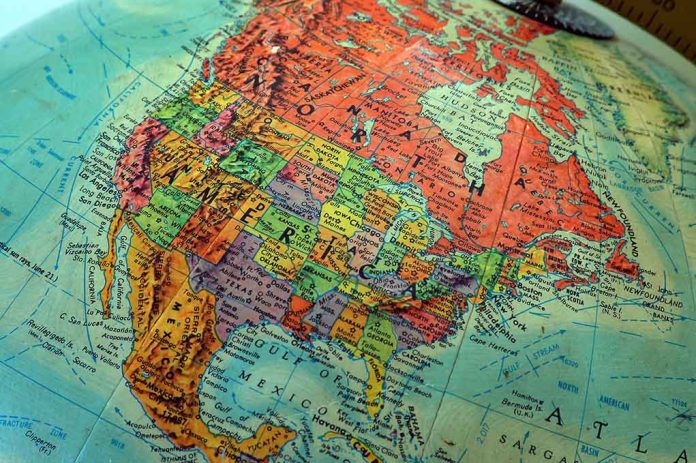
Google Maps, in compliance with an executive order from President Trump, has renamed the Gulf of Mexico to the “Gulf of America” for U.S. users—a decision that has triggered international reactions and reoriented geographic naming conventions.
Key Takeaways
- Google Maps has changed the name from Gulf of Mexico to Gulf of America for U.S. users, based on President Trump’s executive order.
- Mexico contests the name change, referencing international maritime laws.
- The rename is reflected on Google Maps as Gulf of America in the U.S. and Gulf of Mexico in Mexico, with both names shown elsewhere globally.
- Trump designated February 9 as Gulf of America Day in conjunction with this change.
- Google’s decision aligns with its policy to use names as recorded in official government sources.
The Impact of Trump’s Executive Order
President Trump signed the executive order calling for the renaming of the Gulf of Mexico to the Gulf of America as one of his early administrative actions. Following this directive, Google updated its Maps application accordingly. Trump’s order highlighted the intention to restore names that emphasize “Restoring Names That Honor American Greatness,” influencing subsequent changes in federal agency records. The Federal Aviation Administration (FAA) is actively updating their charts and data to reflect these new names.
Google confirmed these adjustments, stating its practice of revising map names to align with updates from official government sources. The change displays only to U.S. users as Gulf of America, while maintaining Gulf of Mexico in Mexico and both names elsewhere, embodying a diplomatic yet geo-specific adaptation approach.
Following Pres. Trump's executive order, Google Maps has officially renamed the Gulf of Mexico to the Gulf of America for users in the U.S. https://t.co/Tl0XUR70ne
— ABC News (@ABC) February 11, 2025
Reaction from Mexican Officials
The Mexican government has expressed opposition to this name alteration, referencing the United Nations Convention on the Law of the Sea. This convention delineates sovereign territories extending 12 nautical miles from coastlines, complicating unilateral name changes. Mexican President Claudia Sheinbaum humorously suggested renaming North America as “Mexican America” in response.
Despite these concerns, Google’s name implementation received the U.S. Board on Geographic Names’ support, which provided the formal acknowledgment necessary for changes in digital mapping applications. Meanwhile, Apple Maps remains unchanged, sparking mixed responses across social media platforms.
Google has updated its Maps application to reflect the renaming of the Gulf of Mexico to the Gulf of America for users in the United States. This change follows the official update in the U.S. Geographic Names Information System (GNIS) shortly after U.S. President Donald Trump's… pic.twitter.com/NCNrVfNyn7
— CGTN America (@cgtnamerica) February 11, 2025
Potential Reversibility and Educational Impact
While legal for U.S. federal agencies, the name shift doesn’t immediately bind private companies or international platforms. Thus, educational materials may retain traditional naming unless compelled by future governmental shifts. This suggests the naming could revert with upcoming administrative changes, marking it as a potentially temporary modification awaiting further public and governmental discourse.
Google Maps continues to highlight these adjustments, affirming its acknowledgment of geographical features and legacy within the broader American canvas—a nod to historical contributions and contemporary geo-political dynamics.





